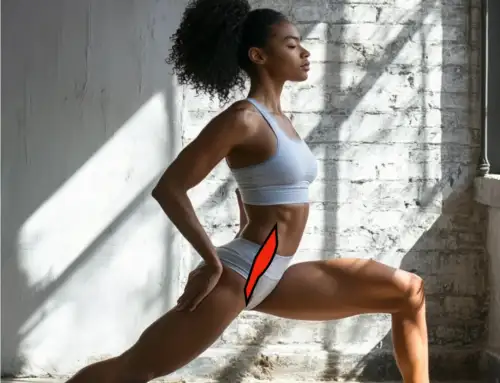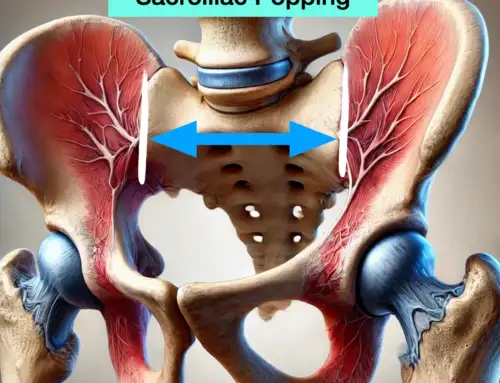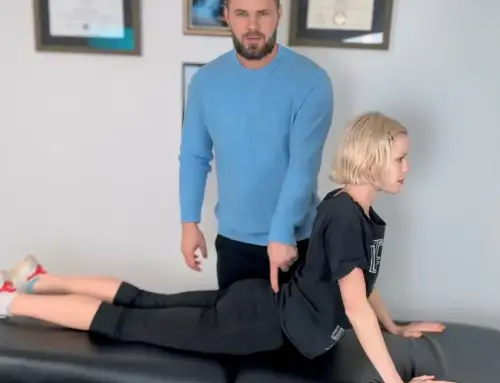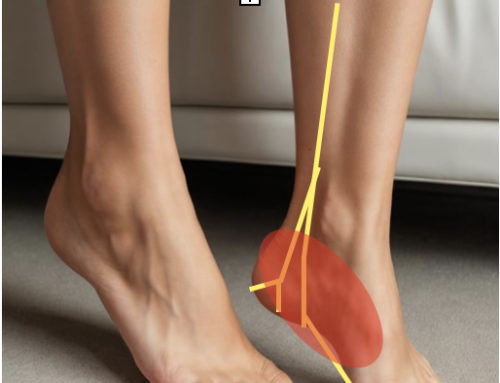Causes and Treatments for Medial Knee Pain
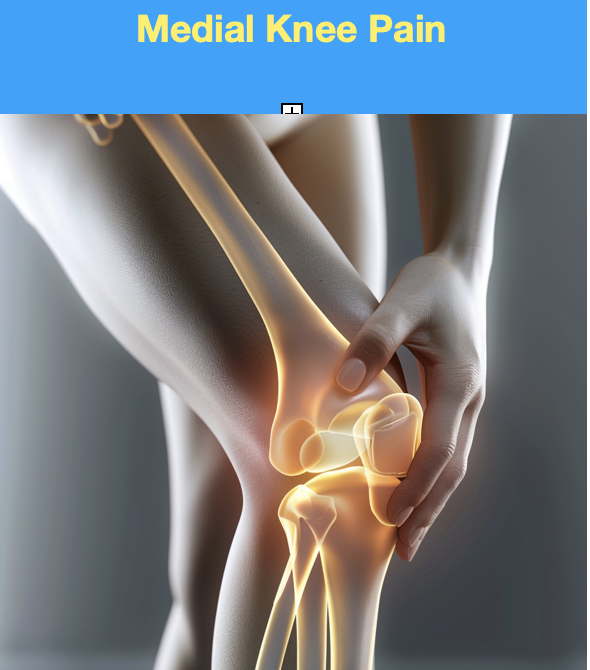
Inner knee pain can stem from reasons like use, injury, or underlying health issues. Seeking guidance from a healthcare provider for a diagnosis and suitable treatment is crucial to avoiding complications.
The term “medial” indicates pain experienced inside the knee. Abrupt injuries occur suddenly, often due to trauma. Continuous knee damage typically arises from overuse.
2024 update– Check out the treatment section
Common causes of Inner knee pain
Injuries to Ligaments- A significant cause of knee discomfort is harm to the collateral ligament (MCL), which plays a role in stabilizing the inner part of the knee. This ligament can suffer strains or tears from twisting motions or direct impacts.
Osteoarthritis- Pain, in the parts of the knee can often be caused by osteoarthritis (OA) which is known for causing cartilage breakdown in weight bearing joints such, as the knees. OA leads to swelling, rigidity and unease in the joints it affects.
Overuse Injuries- Continuous activities that strain the knees can lead to overuse injuries. People involved in activities such as running, team sports like soccer, or jobs involving standing are more prone to developing knee pain due to overuse.
Bursitis- Bursae sacs surrounding joints help reduce friction between tendons and bones; bursitis may occur when these sacs become inflamed or irritated, causing swelling, tenderness, and discomfort on the side of the knee joint.
Patellofemoral Pain Syndrome
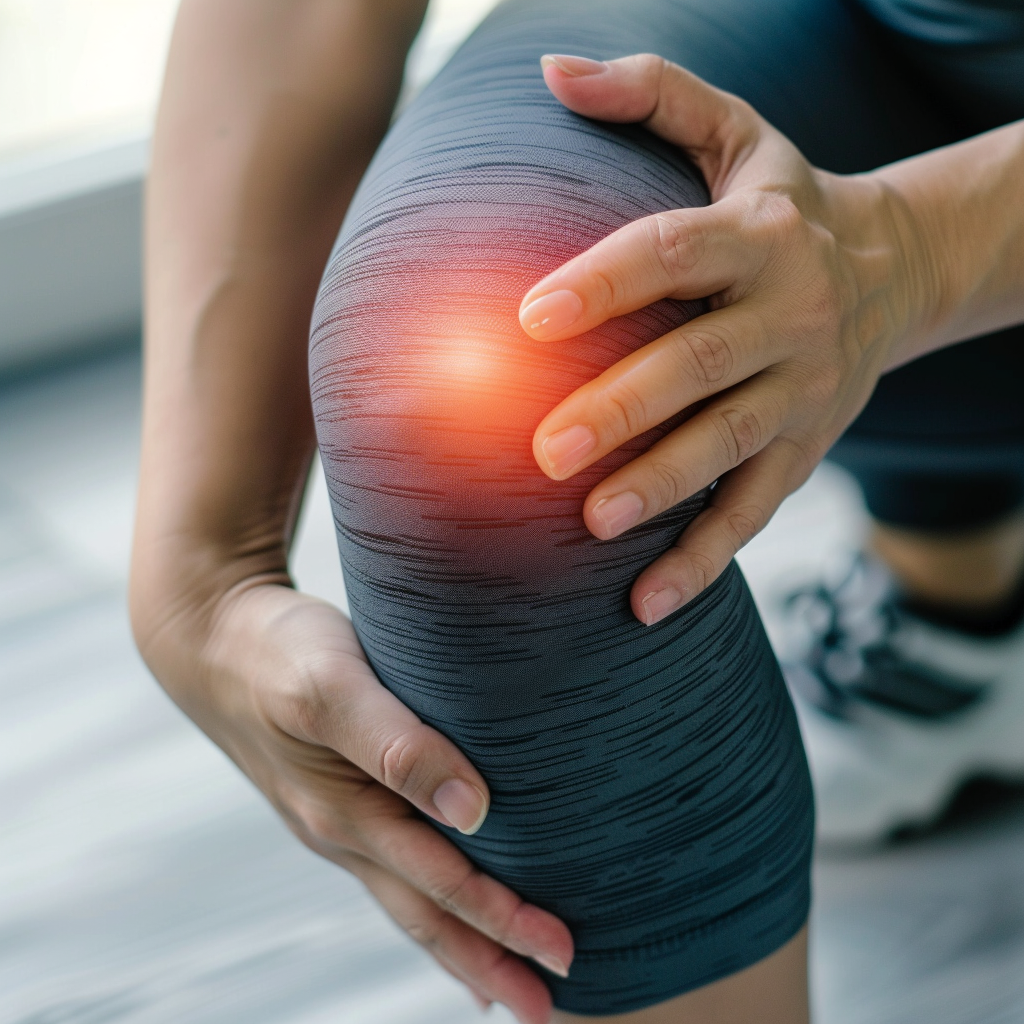
Pain in the front of the knee, around the kneecap, is commonly referred to as Patellofemoral Pain Syndrome. Some of the symptoms include;
- Painful knee joint with tenderness along the inside border and front of the patella.
- The knee can be swollen, especially after exercise.
- Patellofemoral Pain Syndrome is common in soccer or when someone needs to walk up or down hills.
Chondromalacia Patella

The degeneration or breakdown of the cartilage of the bottom of the patella occurs when the patella rubs against the femur.
This patellar degeneration can occur in patients who run or in team sports like soccer.
Pes Anserine Tendiniits
It occurs when the three hamstring tendons that attach to the inside of the knee become swollen from micro tears from repetitive overuse.
Symptoms are difficult to distinguish from an injury of the medial collateral ligament.
Medial knee ligament sprain (MCL sprain)
An MCL sprain occurs when the ligament, on the inside the knee tears. The medial collateral ligament, known as MCL can be injured due, to twisting or a direct impact on the side of the knee.
Among the symptoms are:
- The inside of the knee is the site of sudden onset pain with significant swelling.
- Valgus stress test: Positive
- They frequently happen in addition to an anterior cruciate ligament injury known as an ACL injury and a tear in the medial meniscus.
Knee Osteoarthritis

One of the most common degenerative disorders in healthcare which occurs as patients age. Arthritis occurs with the gradual degeneration of the cartilage that protects the femur and tibia from any compression force like a cushion. Typically, symptoms include:
- Gradual pain over time typically
- It started as a deep, aching pain in the inner knee.
- worse after exercise
- Stiffness and swelling in the joint sometimes cause clicking and popping noises with movements such as squatting.
Medial Meniscal Tear (cartilage)
A rip in the semi-circular cartilage of the knee joint is called a torn meniscus or meniscal tear. In any sport that has contact, it is frequently injured by direct impact or by twisting the knee.
However, it can also happen to older athletes due to progressive degradation. Among the symptoms are:
- Sudden or gradual pain on the inside of the knee.
- Pain when bending the knee, such as squats (flexion).
- It can be swollen, but not always.
- Knee locking can occur or give way in extension (straight)
Saphenous Nerve Entrapment
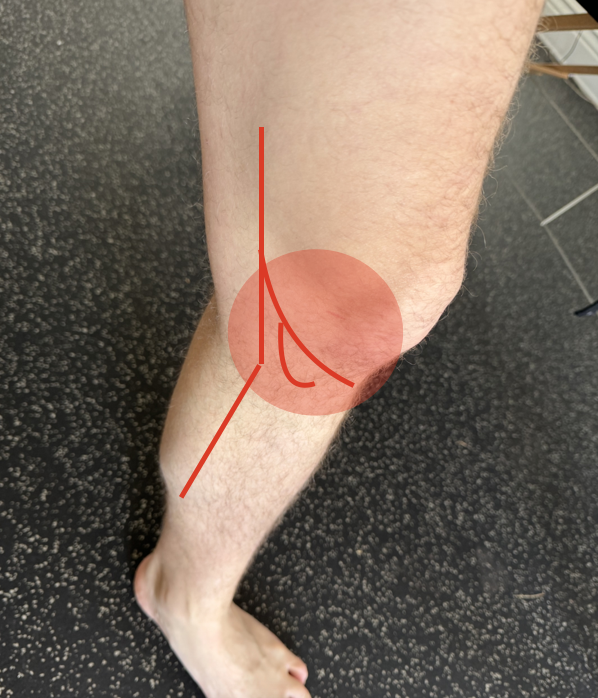
The saphenous nerve is a cutaneous nerve that passes through the adductor canal, which is a common entrapment point. This can cause pain just inside the patella surrounding the area of the knee. Due to its attachments to the capsule of the knee and the MCL, it commonly mimics other conditions.
- This is one of the most common reasons for knee pain that is often overlooked.
Diagnostic Tests for Identifying the Underlying Issue
When dealing with discomfort in the knee, it’s crucial to undergo an evaluation to identify the underlying cause and establish an effective treatment plan.
The diagnostic process includes a range of tests and procedures that help healthcare providers accurately pinpoint the origin of the pain.
Here are some key considerations to keep in mind when addressing knee discomfort;
Diagnostic Examinations and Procedures
- Physical Evaluation—A physical assessment assists in evaluating your mobility, stability, and any indications of swelling or inflammation. Remember palpation.
- The main focus of this blog post
- Imaging Methods—X-rays show our bones, whereas MRI scans examine tissues like ligaments, tendons, and cartilage.
- Mainly used in trauma cases.
- Ultrasound Testing- This noninvasive procedure uses radio waves to produce real-time images within the knee joint.
- Musculoskeletal Ultrasound
- Arthroscopic Examination- In some cases, arthroscopy may be suggested as an invasive technique for visualizing any irregularities.
- Surgery occurs when conservative treatment fails.
Research shows that limited hip rotation and weakness are risk factors for developing pain and, eventually, instability in the knee.
Internal Rotation of the Hip should be 40 degrees; if limited, there is an increased risk of knee injuries.
Surgical interventions for severe cases of knee pain
-
 When conservative treatments fall short, surgery becomes a consideration.
When conservative treatments fall short, surgery becomes a consideration.- Arthroscopic procedures involve repairing damaged cartilage or ligaments using minimally invasive techniques.
- For advanced osteoarthritis cases hindering daily activities, partial/total knee replacement surgery might be necessary.
While these treatments effectively address inner knee pain, they carry potential side effects. NSAIDs could lead to stomach irritation or cardiovascular risks, while corticosteroid injections pose infection/tendon weakening risks. Surgeries come with infection/blood clot possibilities.
Rehabilitation Exercises and Strategies for Preventing Future Injuries
Best Exercises for Inner Knee Pain
Regardless of what condition is causing the symptoms, the easiest and most effective way to address knee pain is to strengthen the gluteal muscles and increase the internal rotation of the hip.
Manual Therapy
Regardless of acute or chronic, the muscles, fascia, ligaments, knee capsule, and tendons around the knee can become dysfunctional from stiffness. This stiffness can affect the femur’s functional capacity and femoral alignment on the shinbone and cause a subluxation of the patella.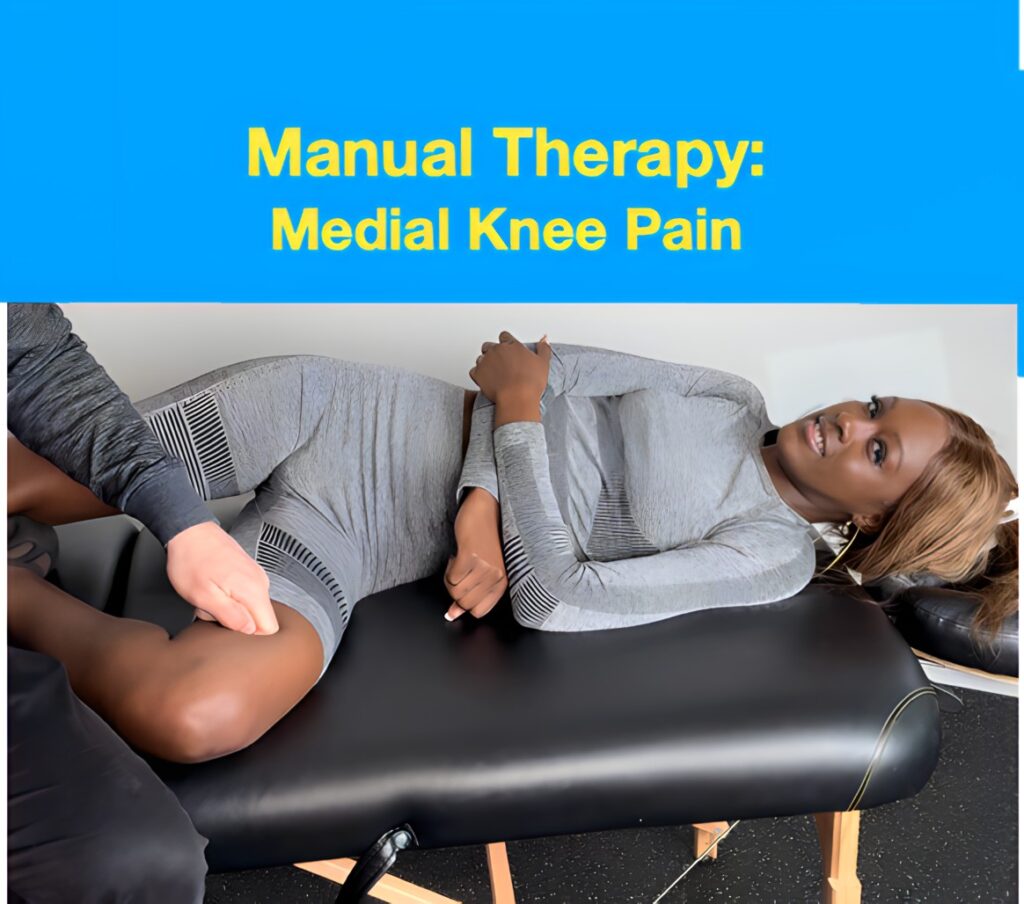
Best Stretches
The pigeon stretch is excellent for treating stiffness in the iliotibial band, gluteal muscles, and hip capsule, as well as for increasing the limited internal rotation of the hip.
Place your shin bone in rotation so it can be placed on a table or chair. You will feel a stretch in the posterior hip. Hold for 30 seconds to a minute.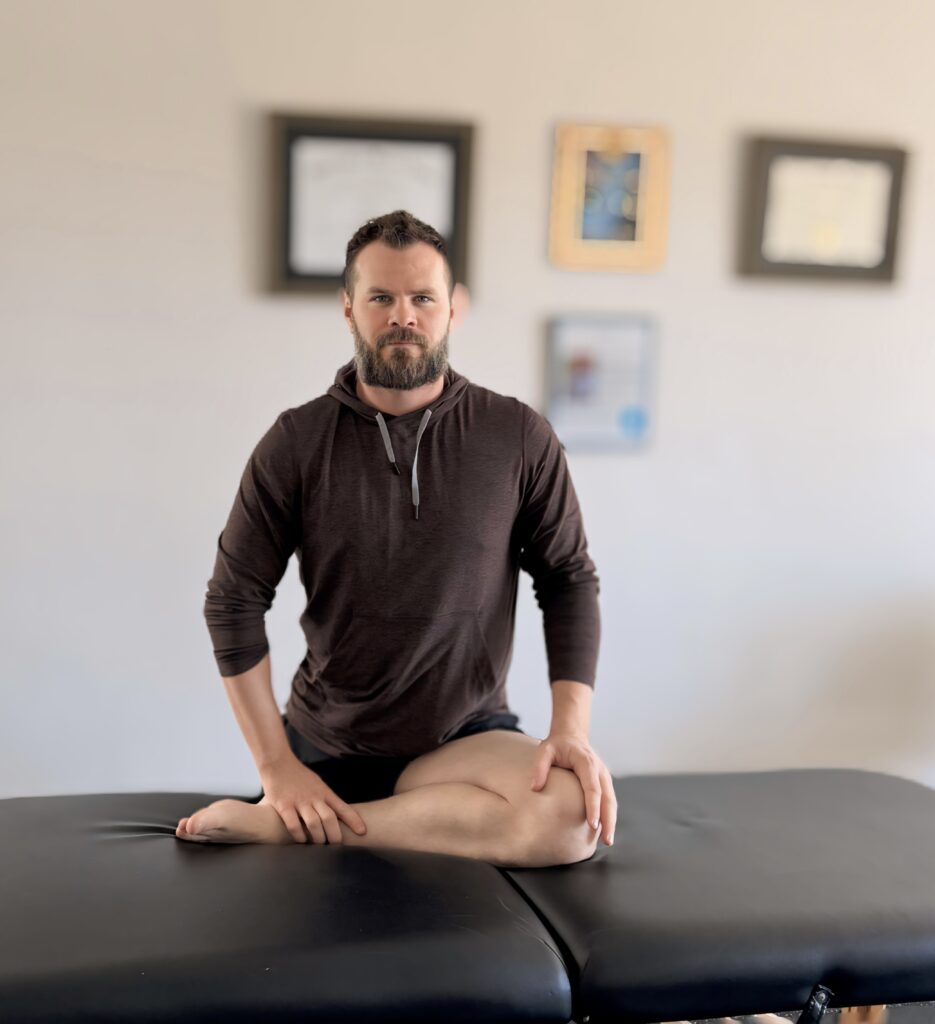
Saphenous Nerve Mobilizations
Mobilize the skin over the adductor canal and gently pull the skin of the leg upwards and downward to stretch and decompress the nerve.
As with most at-home treatments, it’s best to consult your medical professional before attempting.
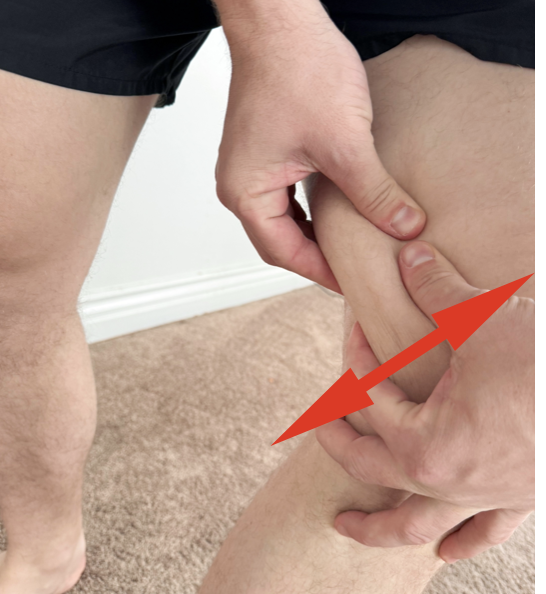
Dr. Justin Dean can be reached by texting (best), calling 323-354-6077, or emailing at drjustindean@gmail.com.
Our editorial practices include evidence-based practices, interventions, and recommendations.
References
Saphenous Nerve
Arthritis
Patellofemoral Syndrome
https://pubmed.ncbi.nlm.nih.gov/29494034/
Meniscus tears


